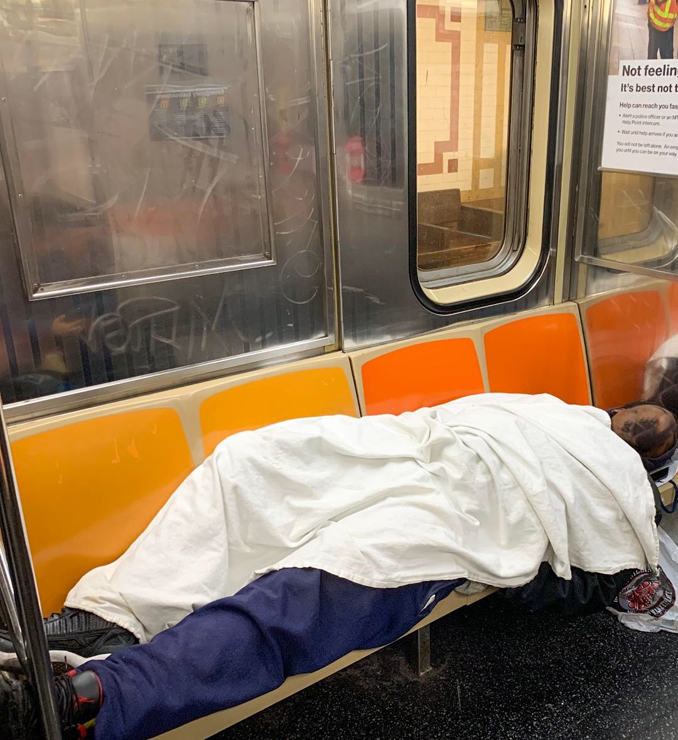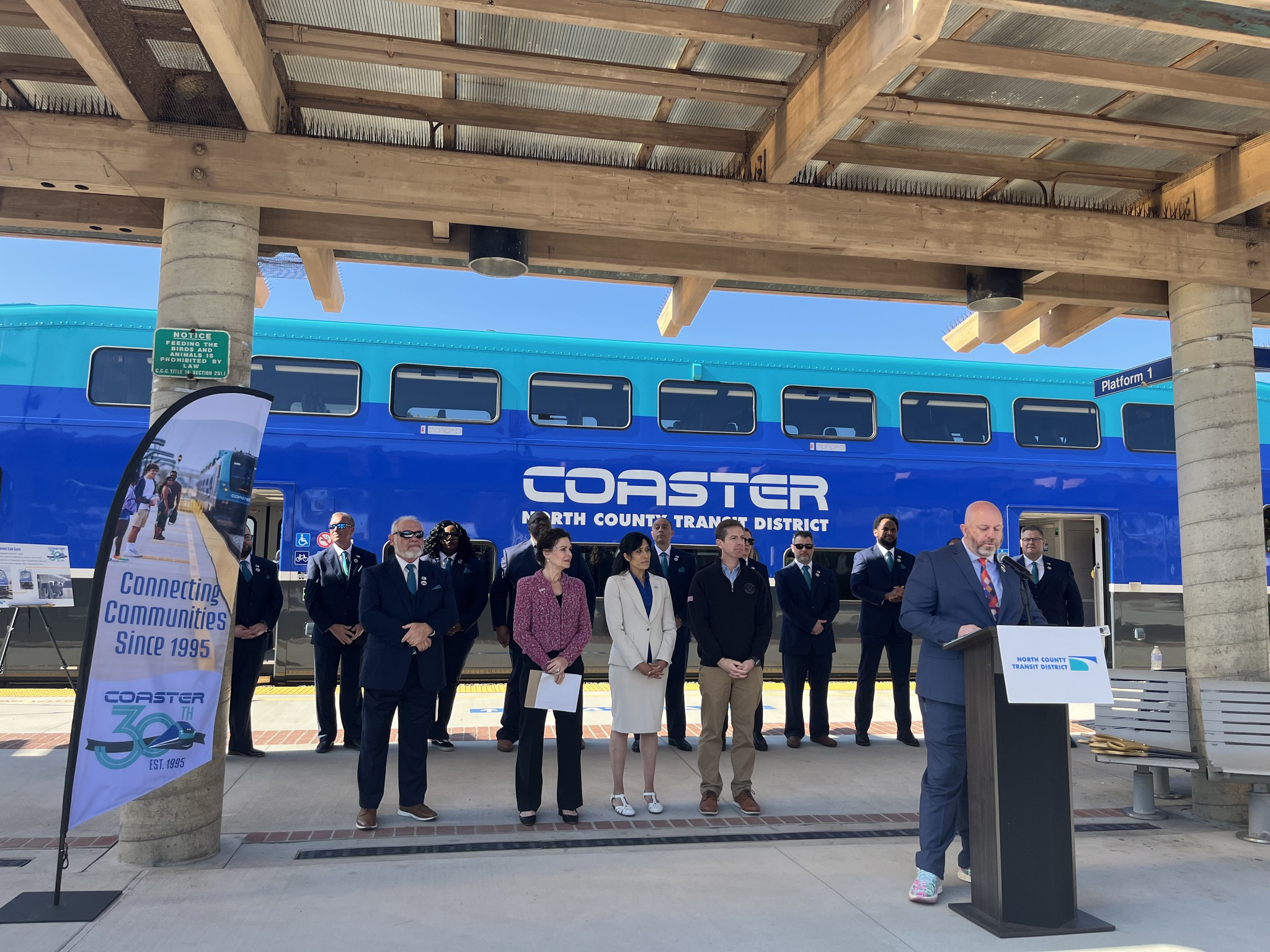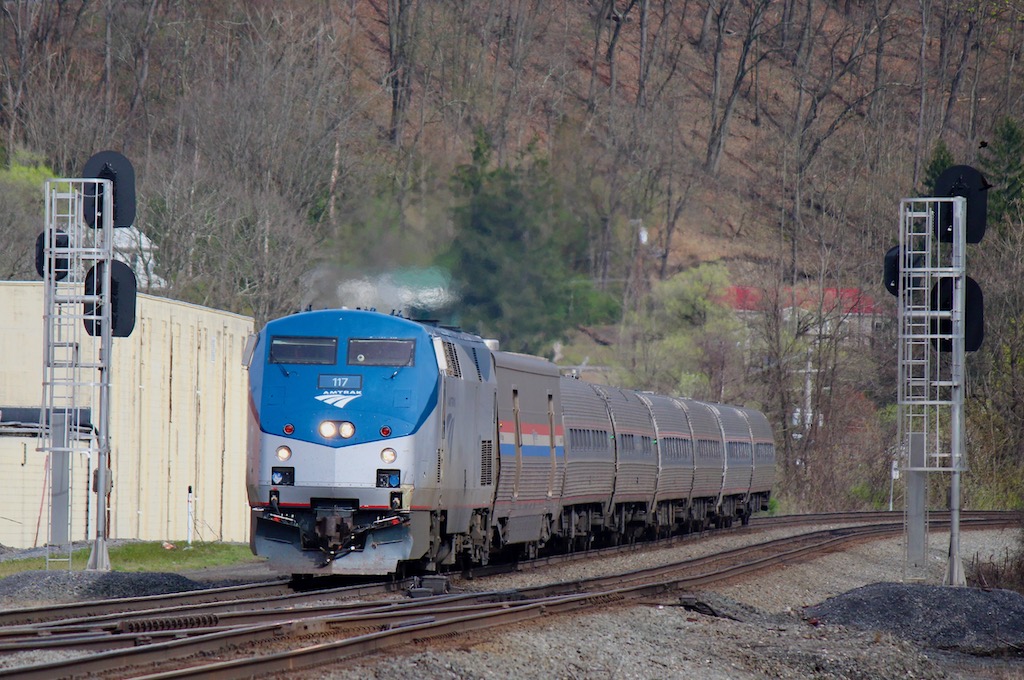NEW YORK — With a survey showing a significant rise in the number of homeless people living on New York’s subways, the Metropolitan Transportation Authority and New York’s state Office of Temporary and Disability Assistance have announced a series of moves to address the issue.
The plans, announced at a Friday press conference, include an increase in homeless transit outreach teams for the state agency, require New York City to better address enhanced permanent homeless services to lessen homeless riders on the Subway, and a 50% increase in the MTA police force to insure rider safety. Some of the newly hired officers will support homeless outreach services. The police force will also inform ridership about applicable rules and regulations. Information will also be distributed through methods including signage on the MTA system and social media. The MTA Office of Inspector General is expected to provide oversight of the plans.
The plans follow July’s creation of an MTA task force on homelessness including the state OTDA, the state Office of Mental Health, and the state Office of Alcoholism and Substance Abuse Services. [See “MTA task force to address homeless issues,” Trains News Wire, July 25, 2019.]
A survey this year has identified 2,178 homeless individuals within the MTA system, up by more than 20 percent from the 2018 count of 1,771 and a higher figure than the overall homeless growth rate in New York City. The MTA’s 8 million daily riders, who have seen an uptick of panhandling and sanitary issues on trains and in stations, as well as other problems. One outburst recorded on video by a passenger showed a homeless man on a subway train who awoke from a nap waving a hammer and terrifying riders.
Currently, MTA workers other than police officers, are instructed not to deal directly with homeless people on trains or in stations because they have no training for those issues. New York City is legally obligated to house all individuals who are experiencing homelessness and request shelter, although many homeless do not do so.
New York State will be spending $20 billion over the next five years to support state-wide homeless services, of which New York City constitutes a large share.
Metropolitan Transportation Authority Managing Director Ronnie Hakim said, “The MTA is working with our Task Force Partners to tackle homelessness in our system. We will continue to work day and night to keep New Yorkers and our system safe.”
The task force’s recommendations are available on the MTA website.















We used to have asylums, but we closed them down to be “kind” to the inmates.
Why is New York State legally obligated to house the homeless? Any fool will tell you that people will make themselves homeless to collect the freebie.
A person who is disabled deserves help. In my mind alcohol or drug addiction are NOT disabilities and those people need to clean up their own act and stop being leeches on society. As a man I knew who was still bitter (decades later) about his alcoholic father often said, “Addiction is a choice.”
So my home state, New York, is going to spend $20 billion of taxpayer money to house homeless people. I would rather see the money spent on ways to put homeless people back into the work force (which is begging for more people) where they can earn some money and not be homeless.
The jobs are there, and with some training and education, at least those who are capable of working can work. If someone isn’t working – why not? If it’s because of drugs or they don’t want to, then I don’t see why the taxpayer should support them.
If someone truly cannot work due to physical or mental disability, then that’s a different story.
Mr. Landey and Mr. McFarlane show why it is so hard to fix homelessness. We could provide shelter to everyone who needs it. However, as a whole we don’t want to give a free house to anyone while our mortgage is due every month.
Charles, it’s all PC “feel good” stuff, and it buys the votes of the “Kum Ba Yah” crowd.
How about enacting a policy that the subways exist solely for traveling patrons and everyone else needs to leave.
You know those thousands and thousands of retired international containers sitting around the country…they can easily be reused and turned into housing units sufficient enough for the homeless, keeping them both off the streets and other places…and it’s not even that expensive to turn them into homes.